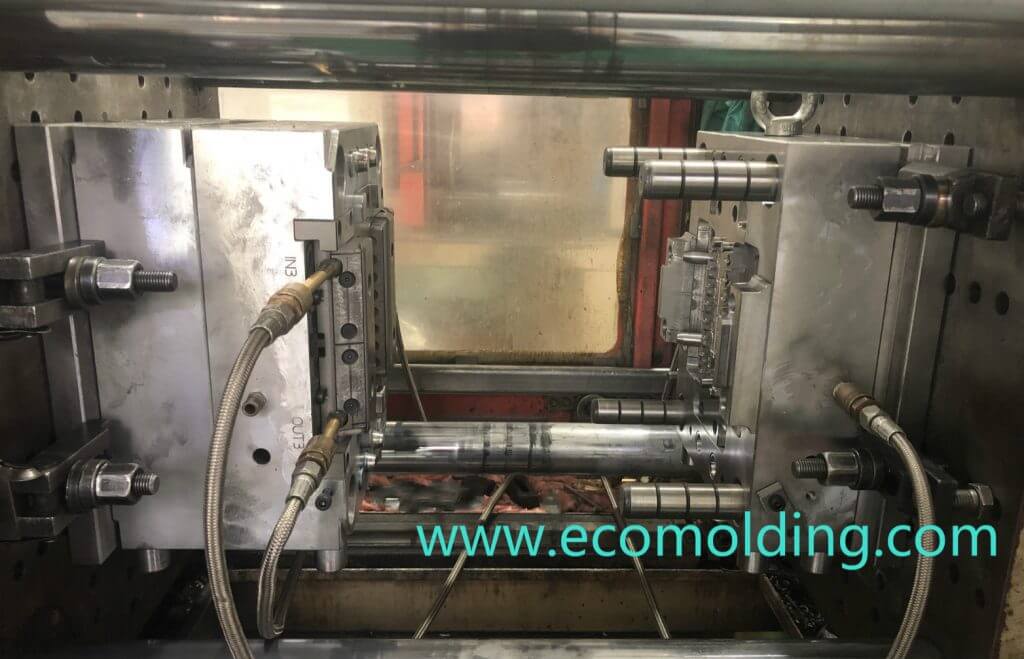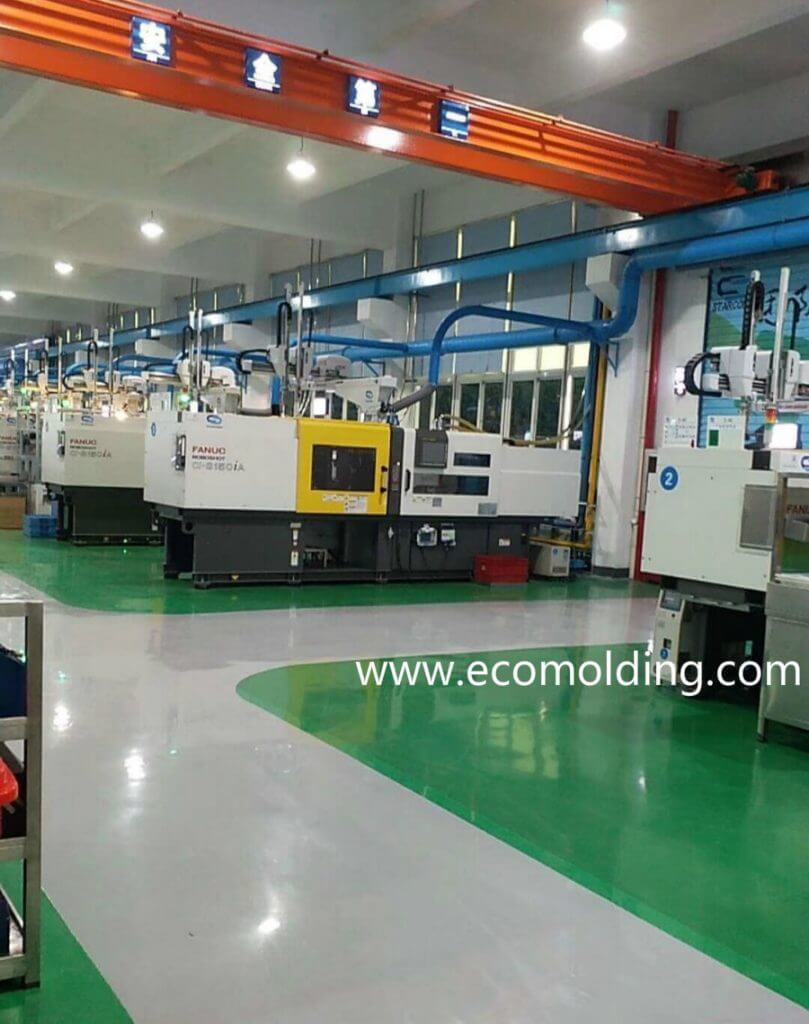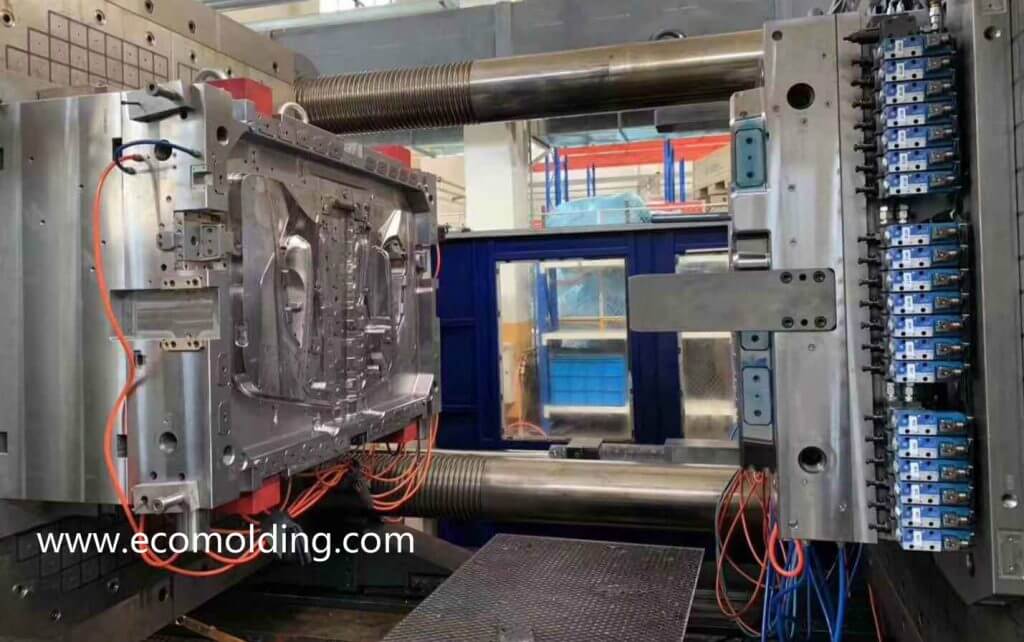The cost of injection molding is influenced by a multitude of factors, but is mainly comprised of the following:
- Raw material cost – This cost is quite easy to be calculated. Ask the raw plastic material supplier how much 1kg costs, multiply the product weight by 3% of loss rate, and then multiply the raw material price to get the cost of the raw material;
- Machine cost – Regarding this cost, ask a plastic injection molding factory what the hourly processing rates of different plastic injection molding machines are? Assume that the processing cost per hour for a 100-ton plastic injection molding machine is 60 RMB/hour, then the cost per minute is 1 RMB; at this point, it is necessary to calculate the injection molding cycle of the plastic part, as well as the number of cavities of the mold. Assume the injection cycle of the plastic part that you are evaluating is 30 seconds, then there are 60/30 = 2 shots in 1 minute, which means that two rounds of molding can be achieved in 1 minute. And, assume it is a two-cavity mold, then the machine cost of the plastic part is 1 yuan divided by the number of shots in 1 minute, and then divided by the number of cavities in the mold. So, the final machine cost is 1 RMB/ 2 shots / 2 cavities = 0.25 RMB / piece.
- The secondary processing cost includes painting/screen printing/electroplating, etc. You may ask their respective processing plants for the figures.
- Packaging costs – According to the size and volume of the plastic part, the cost of the carton/bag can be obtained;
- Transportation cost – According to the delivery location and the cost of the container truck, the transportation cost per piece can be obtained by dividing the total loading amount;
- Other expenses: Because the above costs do not include the costs of indirect personnel or other related personnel, it is necessary to add some fees according to the different conditions of each factory;
The profit equals the total sum of the six items mentioned above multiplied by the profit rate of 10-30%. Then you can get the final cost of a plastic part. The profit should be determined on the basis of the situations in each factory and the order amount.

A Injection mold price calculation method!
Mold price calculation
- Empirical calculation of mold price = material fee + design fee + processing fee & profit + VAT + mold trial cost + packaging & transportation fee, of which the percentages are usually:
Material fee: materials and standard parts account for 15%-30% of the total mold price;
Processing fee & profit: 30%-50%;
Design fee: 10%-15% of the total mold price;
Mold trial: for large and medium-sized molds, the cost can be controlled within 3%, and for small-sized precision molds, within 5%;
Packaging & transportation fee: can be calculated in real terms or by 3%;
VAT: 17%
- Material coefficient method – The mold material fee can be calculated according to mold size and material price. Mold price = (6~10) * material fee
Plastic mold = 6 * material fee
Die-casting mold = 10 * material fee
Cost accounting for plastic injection molding
Cost of a molded part = material fee + processing fee + packaging fee + transportation fee
Description:
- Material fee = [(1 + material loss) * product weight * batch size + material loss during machine adjustment + normal scrap rate * product weight * batch size *] material price / batch size
The material loss is generally 3%-5%; the material loss during machine adjustment and the normal scrapped product usually weigh 5,000g-15,000g.
- Processing fee = (machine adjustment time / batch size + molding time / number of mold cavities) * processing cost of the injection molding machine
At present, processing cost of injection molding machine in Shenzhen is calculated by tonnage (domestic equipment)
| Tonnage of Machines | 80 | 120 | 160 | 200 | 250 | 300 | 400 |
| Cost per hour(RMB) | 35-45 | 65-85 | 80-110 | 95-140 | 150-200 | 180-220 | 250-300 |
Calculation of molded part price – Specifically, the quote for a plastic injection molded part is shown as follows:
Product unit price = material price + processing cost
Material cost = (actual weight + loss) * material unit price
Processing cost = molding cycle * unit price (seconds) ÷ number of cavities (that is, the price of each piece)
If packaging is specifically required, the cost of packaging needs also to be added.
Basically, these are the three major categories.
The material price is relatively simple: PP or ABS is directly calculated as the price * product weight, while that of a colored piece can be calculated on the basis of the raw material price. The price of a black part can be calculated according to the specific recycled materials or product requirements. The processing cost is correlated to the number of mold cavities, the molding cycle and the weight of the product; the machine cost can be detailed to price per second according to machine tonnage. Assume that the number of mold cavities is large, the weight is heavy and the molding cycle is short, the processing cost will be low, accordingly leading to a low unit price.
On assumption that a PP product weighs 50g, make calculations respectively using 1*1 / 1*2 / 1*4. The product is a colored piece made of the new material.cycle time is 60 second.the injection machine is 100 Ton,and cost 60RMB per hour.PP Raw material is 12 RMB per kg.
1*1(1 cavity mold):
Material cost:0.05×12=0.6RMB ; processing cost:60/60/1=1RMB; so injection molding price:0.6+1=1.6RMB
1*2(2 cavities mold):
Material cost:0.05×12=0.6RMB ; processing cost:60/60/2=0.5RMB; so injection molding price:0.6+0.5=1.1RMB
1*4(4 cavities mold):
Material cost:0.05×12=0.6RMB ; process costing:60/60/4=0.25RMB; so injection molding price:0.6+0.25=0.85RMB


